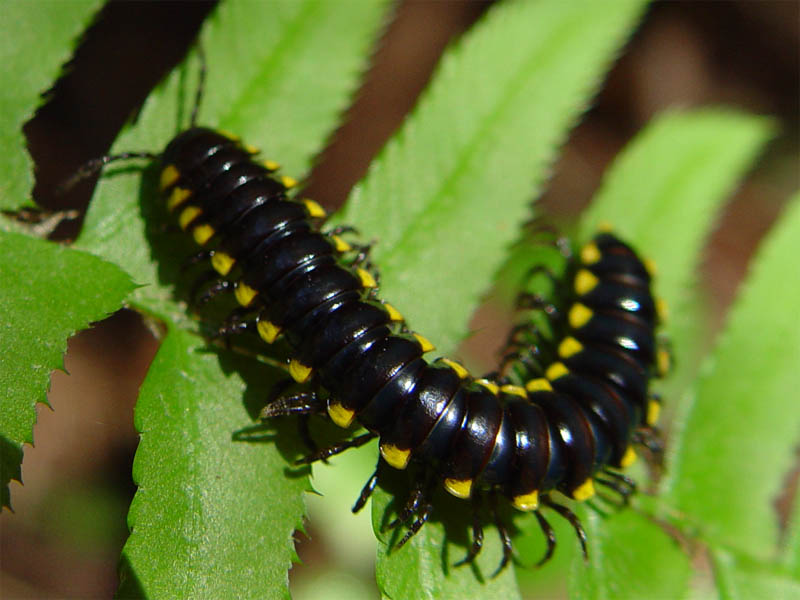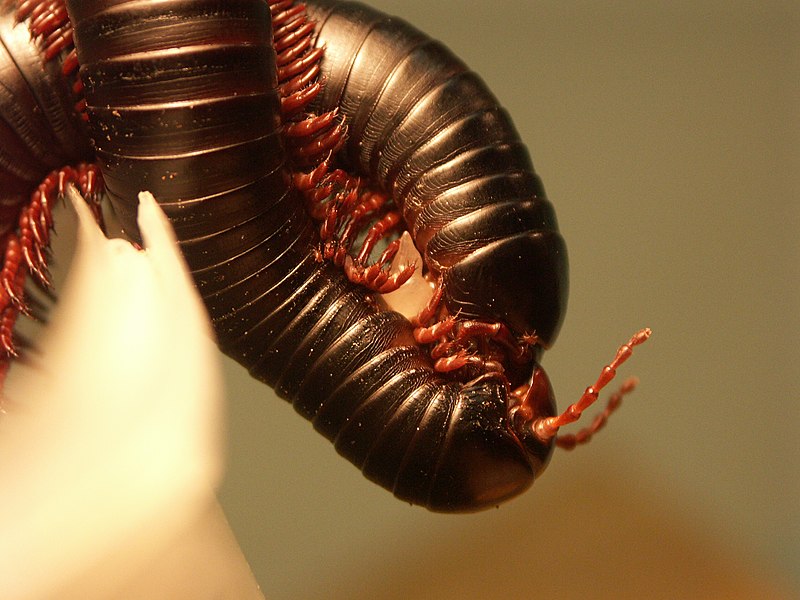Among the world’s 10,000 or so millipede species we find a number of common as well as extremely specialized creatures, many of which make interesting terrarium subjects. The commonly available giant African millipede (Achispirospreptus gigas) is, at nearly 11 inches long, a very impressive beast that may reach 10 years of age and reproduce in captivity. A number of other species appear in the trade from time to time as well…while the largest hail from the tropics, several millipedes native to the USA, such as Narceus americanus, are also quite large, and some are brilliantly colored.
The following information applies mainly to the African giant millipede, but also holds true for many of the other large African and Southeast Asian species that enter the trade.
A Simple but Effective Feeding Technique
 Judging from the questions I’ve received from millipede enthusiasts over the years, a poor diet is the main reason that these creatures sometimes fail to thrive in captivity.
Judging from the questions I’ve received from millipede enthusiasts over the years, a poor diet is the main reason that these creatures sometimes fail to thrive in captivity.
One trick that I have found particularly useful is to add a handful of a reptile calcium supplement, such as Reptocal to the substrate in a millipede terrarium. Millipedes consume a good deal of leaf litter and, in some cases, rotting wood, and will ingest calcium mixed into the litter as well. They seem to require quite a bit of calcium, especially when molting and forming a new exoskeleton, so I powder their other food with it also.
Leaf Litter and Wood
In order to provide as much dietary variety as possible, I always keep millipedes in a substrate comprised of at least 50% leaf litter (oak, ash and other native species) and well-rotted (soft and crumbly) wood collected locally. This is replaced periodically as the millipedes tunnel through and consume the nutrients therein.
The balance of the substrate consists of coconut husk and top soil. Millipedes need to burrow, especially when laying eggs and molting, so keep at least 4-6 inches of substrate available to them. A layer of gravel at the terrarium’s bottom will assist in drainage.
Dietary Variety
As we know little about the actual nutritional needs of any millipedes, I strive to provide as much variety as possible. This seems a useful technique, as I’ve been able to breed several tropical and native species over the years, and have kept individual millipedes for over a decade. Please check out Part II of this article for salad recipes and other foods that have served me well over the years when keeping millipedes.
Further Reading
Please see my article Millipede Emergency for a unique twist to millipede keeping.

 That Reptile Blog – Reptile, Amphibian and Exotic Pet Care and Information
That Reptile Blog – Reptile, Amphibian and Exotic Pet Care and Information

 Judging from the questions I’ve received from millipede enthusiasts over the years, a poor diet is the main reason that these creatures sometimes fail to thrive in captivity.
Judging from the questions I’ve received from millipede enthusiasts over the years, a poor diet is the main reason that these creatures sometimes fail to thrive in captivity.